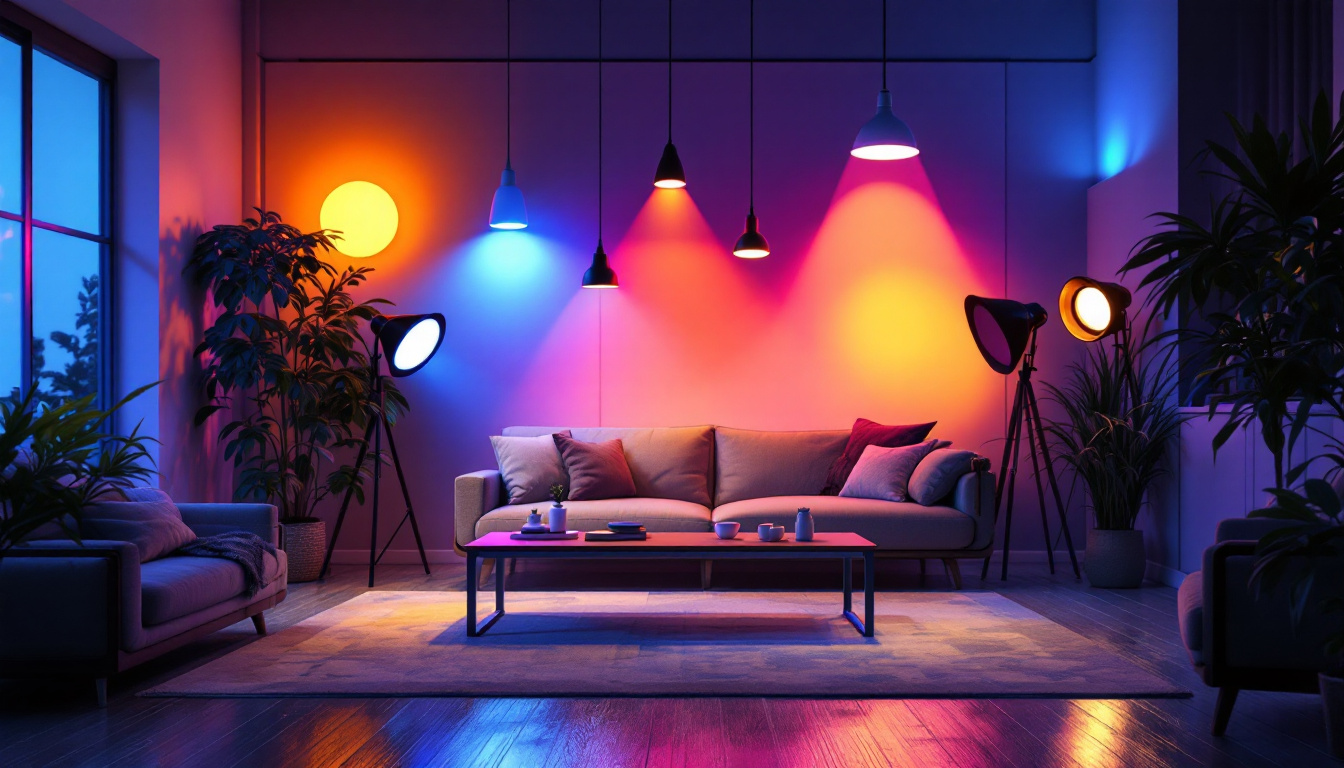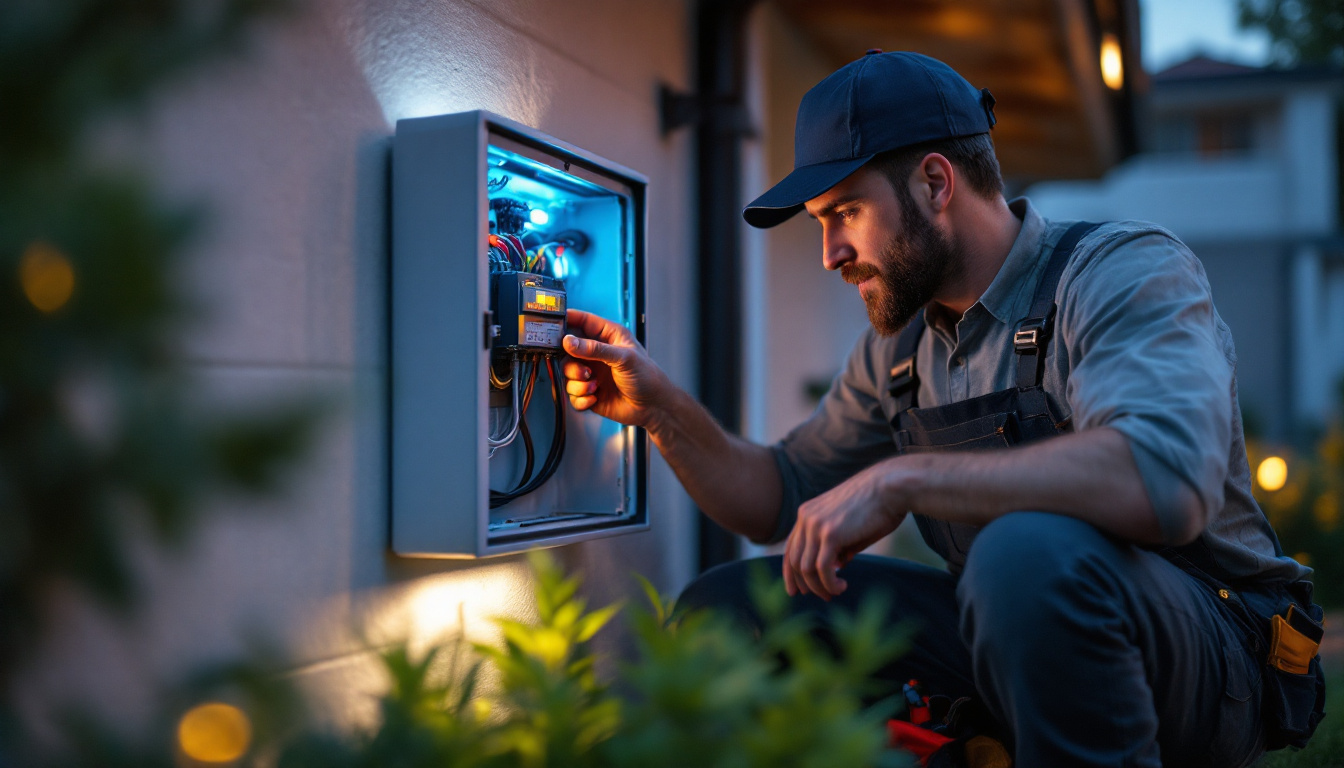
In the realm of commercial properties, outdoor lighting plays a pivotal role in enhancing safety, security, and aesthetics. Properly designed lighting can transform a mundane exterior into an inviting and functional space. It not only highlights architectural features but also ensures that pathways and parking areas are well-lit, reducing the risk of accidents and crime.
Moreover, effective outdoor lighting can significantly impact customer experience. A well-lit environment encourages foot traffic, promotes a sense of safety, and can even enhance brand perception. Therefore, understanding the nuances of outdoor lighting is essential for contractors looking to deliver exceptional results.
When embarking on a commercial outdoor lighting project, several key considerations must be taken into account. These include the purpose of the lighting, the specific needs of the space, and the potential environmental impact. Each of these factors plays a crucial role in the overall effectiveness of the lighting design.
Additionally, understanding local regulations and codes is vital. Compliance with these guidelines not only ensures safety but also avoids potential fines and project delays. Engaging with local authorities early in the planning process can streamline approvals and help identify any specific requirements that must be met.
Another essential aspect to consider is the type of lighting fixtures to be used. Options range from LED lights, which are energy-efficient and long-lasting, to traditional incandescent bulbs that may provide a warmer glow but consume more energy. The choice of fixtures should align with the overall design aesthetic of the property while also taking into account maintenance requirements and energy consumption. Furthermore, incorporating smart lighting technology can offer flexibility and control, allowing property managers to adjust lighting based on occupancy or time of day, thereby optimizing energy usage and enhancing the user experience.
Finally, the strategic placement of lighting fixtures is crucial for maximizing their effectiveness. Lighting should not only illuminate but also create visual interest and guide visitors through the space. For instance, using uplighting to accentuate trees or architectural features can create a dramatic effect, while pathway lights can lead guests safely to entrances. By thoughtfully considering these elements, property owners can create an outdoor environment that is not only functional but also visually appealing, ultimately contributing to the overall success of the commercial space.
Despite the clear benefits of outdoor lighting, many contractors fall into common traps that can lead to costly mistakes. Recognizing these pitfalls can save time, money, and frustration in the long run.
One of the most significant mistakes is failing to conduct a thorough site assessment before designing the lighting plan. Each space has unique characteristics that influence lighting needs, such as existing structures, landscaping, and intended use. A comprehensive evaluation allows for a tailored approach that maximizes functionality and aesthetic appeal.
Moreover, neglecting to consider the specific activities that will occur in the area can lead to insufficient or excessive lighting. For instance, a parking lot may require brighter lights for safety, while a garden area might benefit from softer illumination to create a tranquil atmosphere. Additionally, seasonal changes can affect how light interacts with the environment. For example, deciduous trees will cast different shadows and alter light levels as they lose their leaves in the fall, which should be taken into account during the planning phase to ensure consistent illumination throughout the year.
Energy efficiency is another critical aspect that should not be overlooked. With rising energy costs and increasing environmental awareness, selecting energy-efficient lighting solutions is both economically and ecologically responsible. LED fixtures, for example, offer significant savings in energy consumption and have a longer lifespan compared to traditional lighting options.
Contractors should also consider smart lighting systems that allow for adaptive lighting levels based on real-time conditions. This not only reduces energy waste but also enhances the overall functionality of the lighting design. Furthermore, integrating motion sensors and timers can optimize energy use by ensuring lights are only on when needed, which is particularly beneficial in low-traffic areas. By implementing these advanced technologies, contractors can create a lighting design that is not only aesthetically pleasing but also sustainable and cost-effective over time.
The choice of fixtures and technologies can make or break a lighting project. Selecting the appropriate lighting solutions requires a balance between aesthetics, functionality, and durability.
Different fixture types serve various purposes, and understanding these distinctions is crucial. For instance, floodlights are ideal for illuminating large areas, while wall-mounted sconces can enhance architectural features. Pathway lights are essential for guiding foot traffic, while accent lights can highlight specific elements of the landscape.
Contractors must also consider the materials used in fixtures. Durable materials that can withstand outdoor conditions, such as corrosion-resistant metals and UV-stabilized plastics, are essential for ensuring longevity and reducing maintenance costs.
Smart technology is revolutionizing outdoor lighting, offering enhanced control and efficiency. Integrating smart sensors and controls allows for automated adjustments based on ambient light levels or occupancy. This not only improves energy efficiency but also enhances user experience.
Additionally, smart systems can be remotely monitored and controlled, providing contractors with valuable data on performance and maintenance needs. This proactive approach can prevent issues before they arise, saving time and resources.
A well-executed outdoor lighting project should not only meet functional requirements but also create a cohesive and inviting atmosphere. Achieving this requires careful planning and design.
Establishing a lighting theme that aligns with the overall branding and architectural style of the property is essential. Whether the goal is to create a modern, sleek look or a warm, inviting ambiance, the lighting design should complement the existing elements of the space.
Incorporating various lighting techniques, such as layering light sources and using different intensities, can add depth and interest to the design. This approach creates a dynamic environment that enhances the overall aesthetic appeal of the property.
Before finalizing the design, conducting a lighting simulation can provide valuable insights into how the proposed lighting will perform in real-world conditions. Utilizing software tools allows contractors to visualize the impact of different fixtures and placements, ensuring that the final design meets expectations.
Simulations can also help identify potential issues, such as glare or dark spots, which can be addressed before installation. This proactive approach minimizes the risk of costly adjustments post-installation.
Compliance with local codes and safety regulations is non-negotiable in any outdoor lighting project. Failure to adhere to these guidelines can result in fines, project delays, and safety hazards.
Each municipality may have specific regulations governing outdoor lighting, including restrictions on light pollution, fixture height, and brightness levels. Familiarizing oneself with these regulations early in the planning process can prevent costly revisions later on.
Engaging with local authorities and seeking guidance can clarify any uncertainties and ensure that the project meets all necessary requirements. This collaborative approach not only fosters good relationships but also enhances the likelihood of project success.
Safety should always be a top priority when designing outdoor lighting. Ensuring that all fixtures are installed correctly and securely is essential for preventing accidents and liabilities. Additionally, using fixtures that are rated for outdoor use is crucial for durability and safety.
Contractors should also consider the impact of lighting on pedestrian and vehicular traffic. Properly illuminating walkways and parking areas can reduce the risk of accidents and enhance overall safety. Implementing measures such as motion sensors can further improve security and efficiency.
Once the outdoor lighting system is installed, ongoing maintenance is crucial for ensuring its longevity and effectiveness. Planning for maintenance from the outset can save time and resources in the long run.
Creating a maintenance schedule that outlines regular inspections and upkeep tasks is essential. This includes checking for burnt-out bulbs, cleaning fixtures, and ensuring that all components are functioning correctly. Regular maintenance not only extends the lifespan of the lighting system but also maintains its performance and aesthetic appeal.
Contractors should also educate property owners on the importance of maintenance and provide them with guidelines for keeping the lighting system in optimal condition. This proactive approach fosters positive relationships and enhances customer satisfaction.
As technology continues to evolve, planning for future upgrades can enhance the functionality and efficiency of outdoor lighting systems. Contractors should stay informed about emerging technologies and trends in the lighting industry to provide clients with the best options available.
Incorporating flexible design elements that allow for easy upgrades can also be beneficial. This ensures that the lighting system can adapt to changing needs and advancements in technology without requiring a complete overhaul.
Commercial outdoor lighting is a critical aspect of property design that requires careful consideration and planning. By understanding the importance of outdoor lighting, avoiding common mistakes, selecting the right fixtures, and ensuring compliance with regulations, contractors can deliver exceptional results that enhance safety, security, and aesthetics.
With a focus on maintenance and long-term planning, contractors can create outdoor lighting systems that not only meet immediate needs but also adapt to future advancements. By prioritizing these elements, contractors can avoid costly mistakes and ensure the success of their lighting projects.
Ultimately, a well-executed outdoor lighting project can significantly enhance the value and appeal of a commercial property, making it a worthwhile investment for contractors and property owners alike.
Ready to elevate your commercial outdoor lighting projects with the highest quality fixtures at unbeatable prices? Look no further than LumenWholesale. Our spec-grade lighting products are designed to meet the rigorous demands of any project, ensuring reliability and performance without the premium price tag. Say goodbye to middleman markups and hello to hassle-free bulk buying with free shipping. Make the smart choice for your lighting needs and experience the best value in wholesale lighting today with LumenWholesale.

Discover the diverse world of LED lighting with our comprehensive guide.

Discover why lighting contractors should prioritize commercial hanging LED lights in their projects.

Discover effective strategies for training your team in lighting with ILP Lighting’s comprehensive guide.

Discover how lighting contractors are transforming spaces with exterior electric boxes in this insightful article.